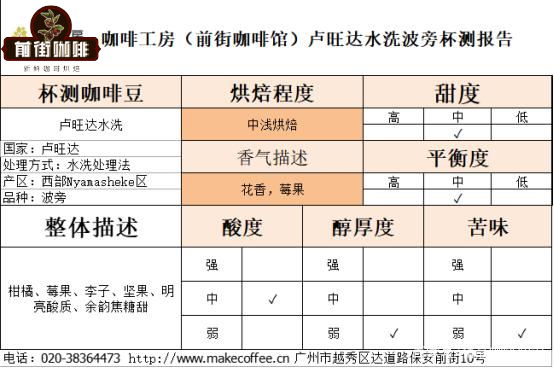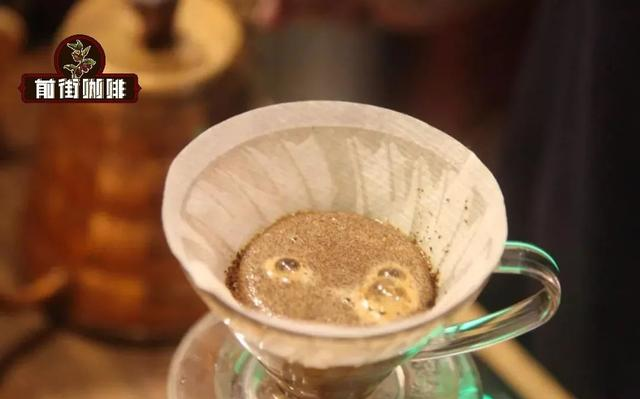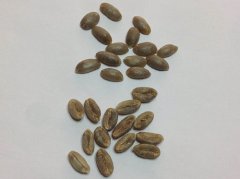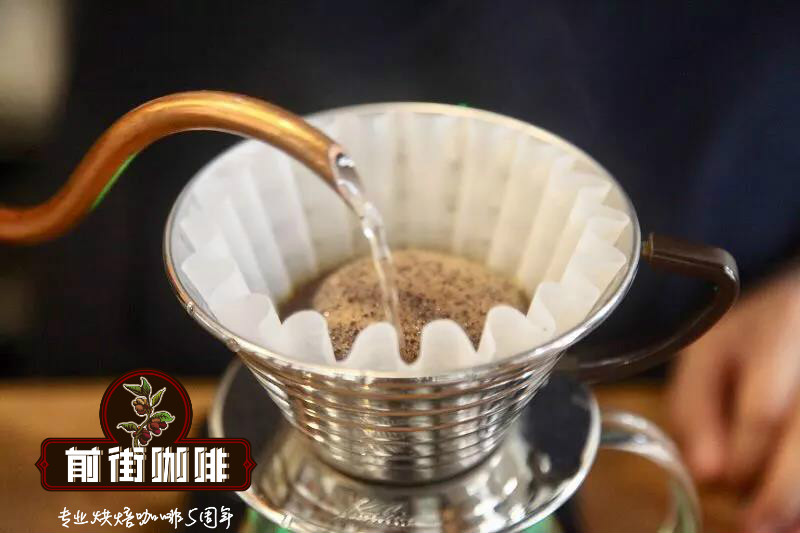Rwanda Red Bourbon Rwanda Red bourbon Coffee characteristics the difference between Red bourbon and Yellow bourbon

Professional coffee knowledge exchange more coffee bean information please follow the coffee workshop (Wechat official account cafe_style)
Qianjie introduced a lot of Rwandan coffee this time, including a washing-treated red bourbon that performed well. Rwandan coffee has been paid more and more attention in recent years, and the reasons behind the story will be explained below. Mainly talking about this coffee, the reason for the introduction is the bourbon variety, one of the oldest coffee varieties, the coffee flavor is high-quality, coupled with the use of washing treatment, highlighting the original superior flavor and delicate taste of coffee, and the flavor of this batch of coffee obviously highlights the difference between the producing areas, although it is the African producing area, it is different from the producing area, unique and distinct.
Rwanda, located in the central African region, is a standard landlocked country, and its neighboring countries are all big coffee producers. At the beginning of the 20th century, Rwanda was successively colonized by Germany and Belgium, and German missionaries were the first to introduce coffee. Coffee production increased significantly during the colonial period, but the exploitation of labor, suppression of the prices of coffee crops and high export taxes made the quality of coffee beans not ideal, which was also a normal phenomenon in the development of commercial coffee at that time. Qianjie Coffee was also found in Brazil, which also experienced colonial rule, and the coffee beans once produced were heavy in quantity rather than quality, resulting in a reputation for poor coffee quality for some time. It was not until the independence of Rwanda and the establishment of the first official coffee organization, OCIR, that coffee bean production was gradually valued. Coffee production in Rwanda continued to grow from the 1960s to 1980s and reached an unprecedented peak in 1986, until the beginning of domestic political instability (the Rwandan genocide) in the early 1990s. Now Rwanda has slowly come back to life and stability was restored after 1995 thanks to the vigorous construction of the Rwandan Government and the support of foreign non-governmental organizations and private groups. Qianjie Coffee has also recently collected several batches of Rwandan coffee beans from different producing areas, one is the rapid development of the Rwandan coffee industry and the guarantee of coffee quality, and the other is that Rwanda has gradually formed an obvious flavor of the producing areas, which is different from Ethiopia and Kenya.

Way of handling coffee in Rwanda
In 2000, in Rwanda, which had just experienced internal chaos, the United States Agency for International Development (USAID) funded two major coffee development projects, PEARL and SPREAD, aimed at supporting the reconstruction of Rwanda. Since the implementation of the plan 46 coffee washing plants have been built in Rwanda allowing Rwanda's economy to grow significantly under the strong export of coffee beans. Therefore, at present, Rwandan coffee beans are mainly treated by water washing. Hand-select ripe coffee fruit, remove the peel and pulp, wash and ferment for 12-18 hours, wash the pectin, and finally dry to less than 14% moisture content. Qianjie Coffee believes that at the beginning of the development of Rwandan coffee beans, it was determined that washing as the main treatment method is the choice to clearly highlight the flavor of coffee. Because washing is the treatment method that can best reflect the essential flavor of coffee, Qianjie coffee will first recommend washed coffee beans to guests when recommending a coffee producing area, so that we can clearly understand the flavor characteristics of the producing area.
Rwanda bourbon coffee beans
More than 90% of Rwandan coffee varieties are bourbon varieties introduced in the early days, as well as mixed varieties of the bourbon family, which are resistant to natural disasters. Originally grown on the island of Reunion, bourbon was introduced to Brazil in 1860 and rapidly expanded northward throughout Latin America. Several Latin American bourbon beans currently harvested in front street coffee include Brazilian red bourbon, Brazilian yellow bourbon and Colombian pink bourbon. However, the bourbon advantage of Latin America no longer exists because of poor disease resistance. By contrast, the Rwandan bourbon species still have an advantage, which is one of the reasons why Qianjie Coffee picks up Rwandan beans. After the red bourbon general coffee tree blossoms and bears fruit, the color change of the coffee fruit is: green > turn yellowish > turn slightly orange > turn mature red > turn more ripe dark red, so some people also call it [red bourbon], in fact, red bourbon, that is, what we call bourbon species. Bourbon planted at high altitude usually has a better aroma, while the acid is brighter and even tastes like red wine.
Qianjie coffee roasting suggestion machine: Yang family 800N, raw beans 550g

Qianjie coffee Rwanda washed coffee bean baking curve
In order to highlight the flavor, Qianjie Coffee is recommended for medium and light roasting because of the fresh acidity of Rwandan coffee beans. The deeper the baking, the more acidity of the fruit will be lost.

Qianjie Coffee report on Rwanda washed Coffee Bean Cup
When the Qianjie coffee cup tested this Rwanda washed coffee bean, the dry aroma showed obvious floral and berry aromas, while the wet aroma had honey sweet and nutty aromas, and the overall flavor showed bright acidity, citrus, berries, nuts and caramel finish.
Rwanda washing bourbon
Production area: Western Nyamasheke area
Altitude: 1700-2000m
Variety: bourbon
Treatment method: washing treatment method
Suggestion on brewing coffee in Qianjie

Qianjie coffee uses staged extraction, steaming with 30 grams of water for 30 seconds, small water injection around the circle to 125 grams for segments, water level drop to 225 grams when the powder bed is about to be exposed, remove the filter cup when the water level drop is about to expose the powder bed, (steaming starts timing) the extraction time is 2 minutes 39 percent 00 ".

Qianjie coffee Rwanda wash coffee beans hand brew coffee
Flavor description: floral and berry aromas, with obvious citrus, berry and plum aromas on the palate, with nuts in the middle and caramel sweetness in the finish.
Important Notice :
前街咖啡 FrontStreet Coffee has moved to new addredd:
FrontStreet Coffee Address: 315,Donghua East Road,GuangZhou
Tel:020 38364473
- Prev

Pointed bourbon-the most precious bourbon in history. Is pointed bourbon better than Rosa Coffee?
Professional coffee knowledge exchange more coffee bean information please follow the coffee workshop (Wechat official account cafe_style) Guatemala coffee pioneer-Incht estate Kaduai and Bourbon varieties introduction earlier this month to take part in a coffee cup test, the object is from the sharp bourbon on the island of Reunion. The pointy bourbon of the island of Reunion, this ordinary language, may not be attractive to ordinary people.
- Next

How many kinds of bourbon do you have? Know red bourbon, yellow bourbon, pink bourbon (orange bourbon) bourbon coffee
Professional coffee knowledge exchange Bourbon\ Bourbon Coffee and its varieties main planting areas more coffee bean information please follow the coffee workshop (Wechat official account cafe_style) Guatemala coffee pioneer-Incht manor Kaduai and bourbon varieties introduction coffee bean varieties are basically divided into Arabica and Robasta beans. And there are 2,000 to 3,000 varieties of Arabica beans, all of them.
Related
- Beginners will see the "Coffee pull flower" guide!
- What is the difference between ice blog purified milk and ordinary milk coffee?
- Why is the Philippines the largest producer of crops in Liberia?
- For coffee extraction, should the fine powder be retained?
- How does extracted espresso fill pressed powder? How much strength does it take to press the powder?
- How to make jasmine cold extract coffee? Is the jasmine + latte good?
- Will this little toy really make the coffee taste better? How does Lily Drip affect coffee extraction?
- Will the action of slapping the filter cup also affect coffee extraction?
- What's the difference between powder-to-water ratio and powder-to-liquid ratio?
- What is the Ethiopian local species? What does it have to do with Heirloom native species?

